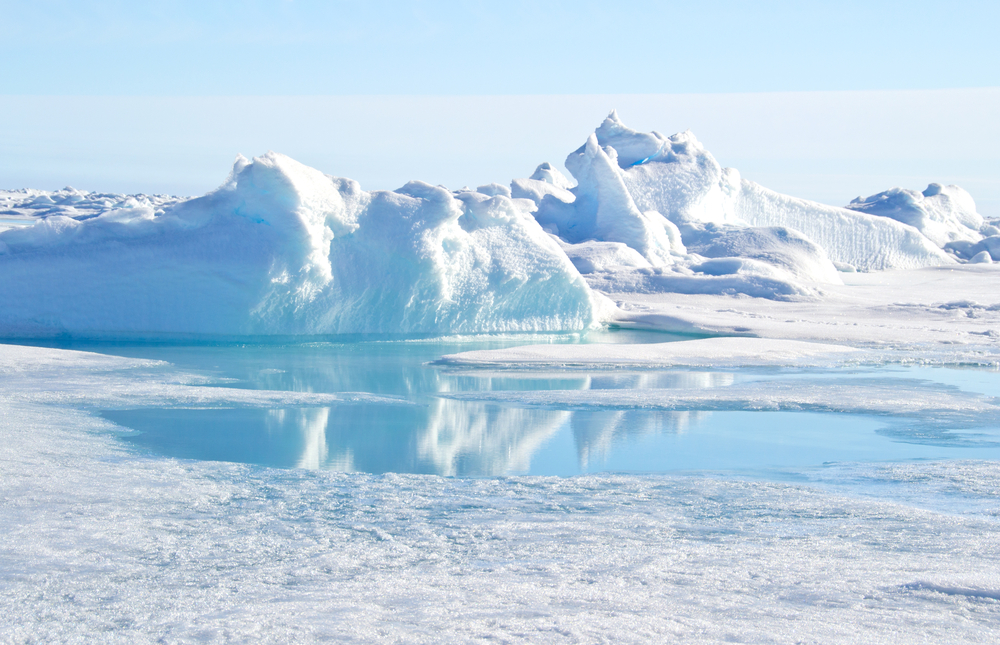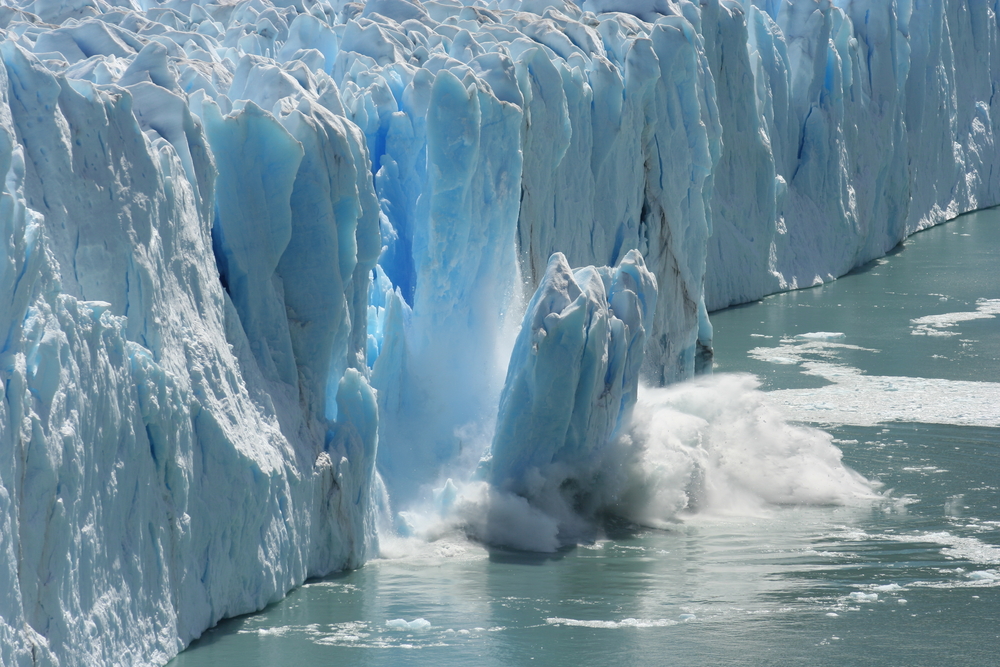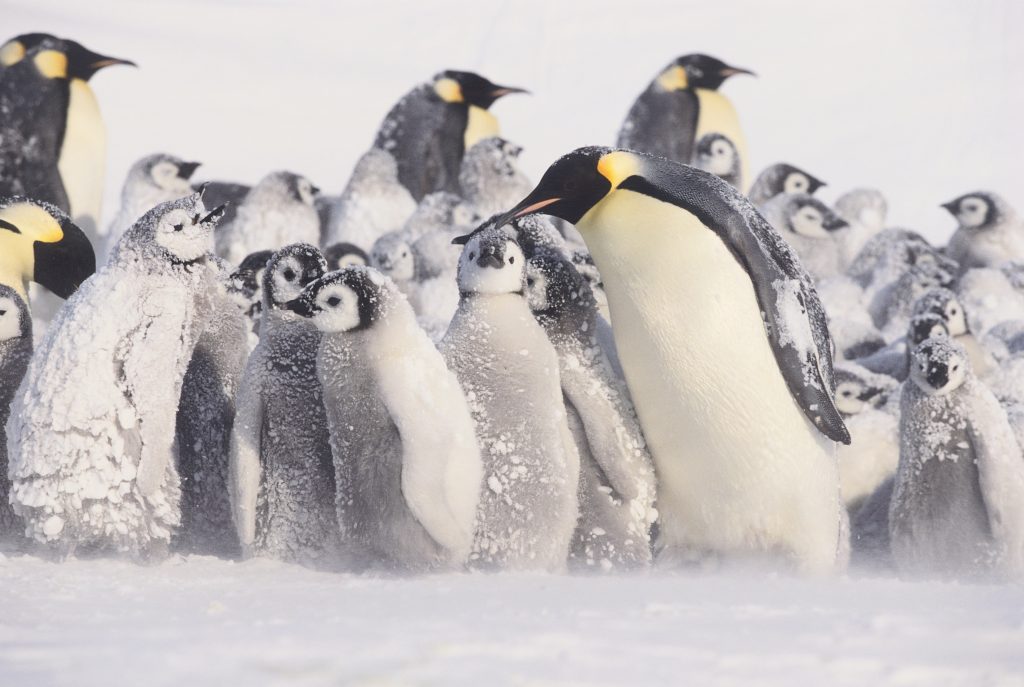The Geography of Antarctica
Stand at the North Pole and, if you are lucky, you will be standing on a layer of ice. If you are still lucky it may be 2 metres thick, otherwise, you’ll be treading water 4 kilometres deep. Stand at the South Pole and you will be on solid ground – well, solid ice over 2800 metres thick. Read on and learn all about the geography of Antarctica.
The Geography of Antarctica

The differences between the Arctic and the Antarctic are stark. The Arctic is a large ocean surrounded by land. Antarctica is a large continent surrounded by an even larger ocean. Antarctica is big. At 14,245,000 square kilometres it is the fifth largest continent and getting on to twice the size of Australia and 1½ times the area of the US.
Antarctica is a roughly circular continent with a long finger of land reaching out to South America as if trying to stay connected to the rest of Gondwana as it drifted away. Two major indentations in the coast are ice-infested seas, studded with icebergs encased in frozen sea. At the head of these bays are ice shelves and the glaciers that feed them, leading into the heart of a vast frozen land. “The Antarctic” encapsulates the continental land of Antarctica and the surrounding barrier of cold stormy ocean.
Antarctica and its altitude

Both the poles are cold. But what makes Antarctica much colder than the Arctic is that most of the Antarctic continent is not at sea level but at high altitude. The average altitude of Antarctica is 2160 metres (the highest elevation of all continents and over twice the average elevation of Asia, the next highest).
Antarctica is almost completely (98%) covered by permanent ice – the largest single mass of ice known in the universe. It has over 26 million cubic kilometres of pure fresh water, frozen solid, and is 4800 metres through at its thickest point.
Over 60% of the world’s fresh water is trapped in the ice sheet. That is enough to raise global oceans 58 metres if all of it were to melt. In fact, there is so much ice that in some parts of Antarctica the weight of ice depresses the underlying land below sea level. The highest point of the Antarctic ice sheet is a place called Dome A. At almost 4100 metres it is twice the height of Mt Kosciuszko, Australia’s highest!
The “top” of Dome A is actually not a peak but just the highest point on a seemingly flat ice plateau. The ice has formed from the slow accumulation of snow over thousands of years. Imagine a snow flake landing at Dome A. It settles into the surface and then more snow falls to cover it. The gradual snow load compresses the flakes into a mass of ice.
Then the relentless force of gravity starts the ice moving. From Dome A it is all downhill to the coast. The ice slowly builds momentum as it follows flow lines in the underlying bedrock and the weight of accumulating snow pushes from behind. The glaciers, essentially rivers of ice, take form guided by the sub-glacial mountains and valleys, eventually to reach the coast many thousands of years later.
Glaciers and Icebergs

The world’s largest glacier, the Lambert Glacier in East Antarctic, drains some 8% of the Antarctic ice sheet. It is up to 2500 metres deep and given its huge mass it is one of Antarctica’s fastest moving, accelerating from 50m per year inland to 1200m per year where it reaches the coast.
Like many Antarctic glaciers the “rush” of ice is such that it floats out onto the sea to form a huge shelf of floating ice. Bit by bit the edges break off Antarctica’s many ice shelves under the influence of wind, tides and currents. Typically the broken pieces are tabular icebergs which then disperse into the ocean, drift north and eventually melt. Some of these icebergs are gigantic.
The largest on record (some 290km long and up to 40km wide) was called B15 when it snapped off the Ross Ice Shelf in 2000. It broke up over the following 5 years. Parts of B15 are still lumbering around the Southern Ocean.
Ice-free Mountain Ranges

But what of the small part of Antarctica that is not ice? Poking up through the ice cap just the tops of some mountains are visible. These are called nunataks. In other parts a large mountain range will appear, such as the Prince Charles Mountains in East Antarctica and the spectacular ranges in Queen Maud Land. The greatest range is the Transantarctic Mountains stretching across the continent from the Ross Sea to the Antarctic Peninsula. Such ranges are cloaked in steep and impassably crevassed glaciers which continue to shape the mountains.
Antarctica’s highest point, Vinson Massif, is in the Sentinel Range and reaches 4,890 metres. Around the coast are numerous small rock exposures. These are ice-free but snow covered in winter and in the past these have been called oases.
Such ice-free areas are where Antarctica’s few terrestrial organisms, small insects and hardy plants and lichens, have established. In the Ross Sea region there are also the so-called Dry Valleys – exposed after the retreat of glaciers but cold, windy, ice-free areas largely devoid of precipitation and life.
Seasons influence the Geography of Antarctica

Surrounding Antarctica is a seasonal belt of sea ice. At its peak in late winter the area of Antarctica under ice is almost doubled by this freezing of the sea. But the return of sunshine in the spring causes much of the sea ice to weaken and break up, allowing access to the continent by seals and penguins. And by ships (if they are strong enough to push through).
Any sea ice that does not melt in summer can accumulate around grounded icebergs and in coastal bays forming large areas of multi-year ice that linger until the icebergs move on. There are many form of sea ice. Have a look at the pictures of brash ice, fast, frazil, nilas, grease, pancake, shuga, and slush.
It’s not just ice that flows off Antarctica’s heights. The severely cold air of the high ice cap flows downhill under the effects of gravity creating fierce katabatic winds (see Antarctic weather) – so fierce they can even prevent the sea ice forming as any young ice is driven away.
This creates ice-free zones in the sea (called polynyas) which allow the winds and extreme cold to chill the surface, driving the formation of super-chilled water which takes in the salt expelled from sea ice and (because salty water is heavier than freshwater) sinks to the ocean floor, forcing the circulation of deep water currents in the world’s oceans. The combined inflow of cold air and ice from Antarctica thus has a profound influence on the dynamics and chemistry of the Southern Ocean, the world’s most mobile ocean.
Human Geography of Antarctica

Human Geography of Antarctica is inevitably linked to access to the land. Because ice is constantly moving and, up on the plateau, the snow continuously accumulates, the most habitable places for humans are the small coastal ice-free zones. Of course, these are also the areas most favoured by wildlife, nearly all of which are summer visitors that visit to feed and reproduce. Thus there is an inherent competition for areas that can be settled.
With few exceptions, the almost limitless Antarctic ice cap is largely unoccupied by humans unless there are short term scientific projects. The exceptions are the permanent settlements at just four main inland sites: the South Pole (a US station established in 1956); Vostok (a Russian base dating from 1957); Concordia (a 1997 joint French and Italian research base at Dome C); and Kunlun (the 2009 Chinese station at Dome A). Most other human settlements are at or near the coast. Thus Antarctica is a huge continent, occupied almost entirely on its periphery.
Further offshore are the sub-Antarctic islands – small, remote, desolate and in many cases uninhabited outposts of land. They are uninhabited – that is, except for vast congregations of wildlife. Seals, seabirds and vegetation teem over these islands which provide habitat and refuge not available in the ice-bound lands further south. See the separate article on the sub-Antarctic.

Possibly the most picturesque parts of the Antarctic are the coastal mountains, glaciers and wildlife of the Antarctic Peninsula. This relatively accessible region has the highest concentration of scientific stations, the most wildlife, and by far the highest level of tourist visits. It is of course a most beautiful part of Antarctica. But it is not really typical of Antarctica.
Most of Antarctica is largely unseen because it is so hard to access (let’s face it, huge stretches of the coast can’t be reached by most Antarctic ships) and, once up on the ice plateau (where few aircraft can land), it appears as a featureless white expanse. So much of what you have seen of Antarctica is from the 2%.
Do you want to be amazed by Antarctica’s incredible mountain ranges and ice formations yourself? Chimu Adventures offers many voyages to this white continent. Visit our Antarctica Cruise page for more information.

Talk to one of our experienced Destination Specialists to turn your Antarctic, Arctic and South American dream into a reality.
Contact us